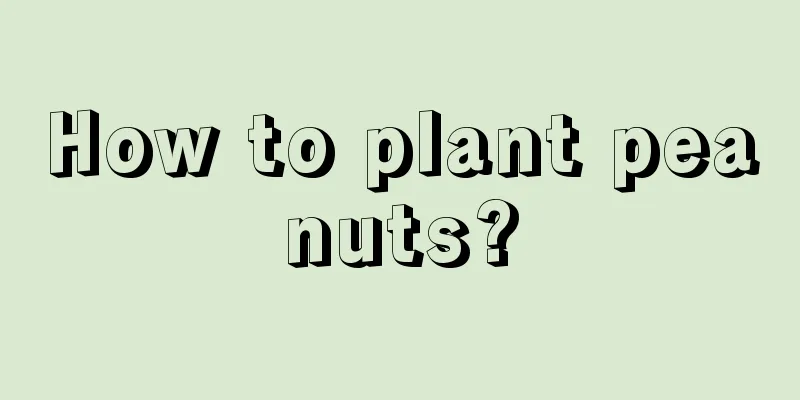How to plant peanuts?

|
Peanut is not only an important edible oil crop , but also used in food processing, livestock feed and pharmaceutical industries. In order to improve the yield and quality of peanuts, the choice of planting time and high-yield planting technology becomes crucial. So how to plant peanuts? Let’s take a look below. 1. Planting time In most areas, peanuts are usually planted in spring or summer. The best strategy for choosing planting time is a comprehensive consideration of local climate data, soil conditions and agronomic management requirements. 2. Soil preparation and improvement Choose soil that is loose, well-drained and has a pH of 6.0-7.0. Deep plowing and tillage are carried out, and organic and mineral fertilizers are added to improve soil structure and provide adequate nutrients. 3. Variety selection Choose high-yield varieties that are adapted to local climate and soil conditions and are resistant to pests and diseases, drought and cold. Commonly used varieties include Huayue No. 1, Qinhua Peanut No. 1, etc. 4. Planting density and row spacing Determine the appropriate sowing density and row spacing based on the variety and soil conditions, generally 100,000 to 150,000 plants per mu. Close planting helps increase yield and utilize soil resources. 5. Irrigation management Adopt a reasonable irrigation system according to the different stages of peanut growth and soil moisture conditions. Ensure adequate water supply, but avoid standing water or overwatering which can cause root suffocation and disease. 6. Fertilization technology Apply nitrogen, phosphorus, potassium and other nutrients reasonably according to the soil nutrient status and peanut growth requirements. Top dressing should be carried out in conjunction with the growth stages to increase plant height, flowering and pod-setting ability. 7. Pest and disease control Establish a comprehensive pest and disease control strategy, including pest and disease monitoring and early warning, reasonable prevention and control measures (such as biological control, chemical control, etc.) and good field hygiene management. 8. Timely harvesting and post-processing Harvest at the right time according to the growing period of the variety and the maturity of the pods. Pay attention to details during the harvesting process, such as avoiding damage to the pods and maintaining seed integrity. Proper drying and storage after harvesting is required to maintain the quality and nutritional value of the seeds. That’s it |
<<: When does iris bloom and how to care for it during the flowering period
>>: How to care for hibiscus and what should be paid attention to
Recommend
Sweet potato hydroponics video: Put the leftover sweet potatoes in a pot and they will grow into a big bonsai!
Sweet potato hydroponics video Sweet potato hydro...
How to remove freckles with garlic
1. Freckle removal method 1. Peel and clean the g...
What flowers are suitable for growing in Xingtai? What are the city flowers and trees?
1. Climate characteristics of Xingtai Xingtai has...
How to prune jasmine
1. Pruning time Jasmine only needs to be pruned t...
The efficacy and function of Bletilla striata
The efficacy and function of Bletilla striata Spe...
Where is Cistanche deserticola suitable for planting?
Cistanche deserticola planting area Generally, Ci...
How to propagate potted grapefruit
1. Seed propagation method The plump fruit core o...
Is broccoli a carbohydrate or a vegetable?
Broccoli is a delicious and healthy food. It is r...
How to grow aloe vera and what kind of soil is needed
1. Choose the soil Aloe vera has relatively high ...
How many Phalaenopsis orchids should be planted in one pot?
How many Phalaenopsis orchids can be planted in o...
Can dog food be used as fertilizer?
Dog food as fertilizer Dog food can be used as fe...
How often should I water heather?
1. How often should I water? Heather has differen...
How does morning glory spread its seeds?
1. Methods of seed dissemination 1. Self-ejection...
How to prune potted roses
How to prune potted roses It is more appropriate ...
How to grow Epiphyllum seedlings? Can I water them when they are about to bloom?
1. How to cultivate seedlings 1. Soil selection: ...









